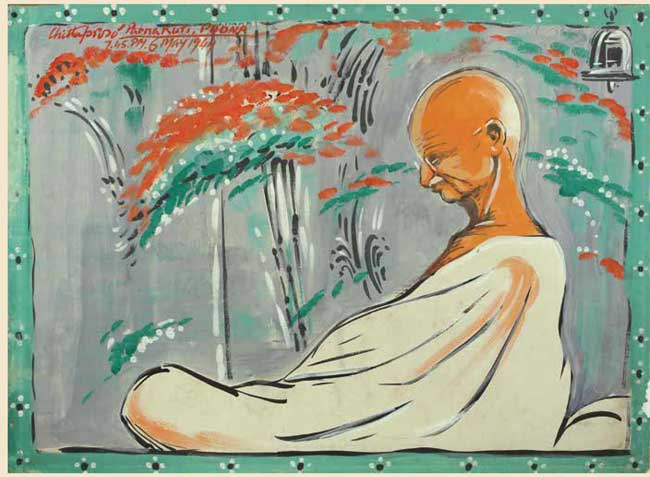The framers of the Constitution took note of the fact that certain communities in the country were suffering from extreme social, educational and economic backwardness on account of the primitive agricultural practices, lack of infrastructure facilities and geographical isolation. The Constitution of India in Article 366 (25) prescribe that the Scheduled Tribes means such tribes or tribal communities as are deemed under Article 342 of the Constitution to be Scheduled Tribes […]
Primitiveness, geographical isolation, shyness and social, educational & economic backwardness due to these reasons are the traits that distinguish Scheduled Tribe communities of our country from other communities. | Learn more >>
Many ST seats [reserved for students from Scheduled Tribes] are not filled in professional colleges because the candidates are not found suitable.” – Santali poet, scholar and translator Dr. Ivy Imogene Hansdak in Presidential elections: An Adivasi in high office (Indian Express) >>

Dr. Ivy Hansdak clarifies that during the early twentieth century, “two main streams within Indian anthropology influenced the literary and visual representations of tribes by mainstream writers, artists and film-makers. One group was led by GS Ghurye (the assimilationist position) and the other by Verrier Elwin (the isolationist position). Later, Elwin shifted to the intergrationist position. According to the former, tribes were seen as ‘backward Hindus’ and an attempt was made to assimilate them into the Hindu fold. The identity of tribals as ‘vanavasi‘ comes from this position. Elwin, on the other hand, wanted to preserve their distinctive culture and often glorified them as the Noble Savage. Elwin’s views influenced Pandit Nehru’s tribal policy. Today, most tribals are being clubbed together with the scheduled castes (SC or dalit) with whom they share reservation in college admission and jobs. In the government documents, ‘SC/ST‘ are usually written together. The certificate that is issued to those claiming reserved status is also called ‘caste certificate’.” (email dated 26 April 2023)
See also
Adverse inclusion | Casteism | Rural poverty
Childhood | Tribal Children’s Right to Education in India
Demographic Status of Scheduled Tribe Population of India (Census figures 2011)
Fact checking | Figures, census and other statistics
Human Rights Commission (posts) | www.nhrc.nic.in (Government of India)
Search tips | Names of tribal communities, regions and states of India
“What is the Forest Rights Act about?” – Campaign for Survival and Dignity
“Who are Scheduled Tribes?” – Government of India (National Commission for Scheduled Tribes, NCST)
“We shall first have to give up this hubris of considering tribes backward. Every tribe has a rich and living cultural tradition and we must respect them.” – Vice President M. Venkaiah Naidu on the constitutional obligation to respect the cultural traditions of India’s tribal communities

Gandhian social movement | Constitution | Adverse inclusion >>
“Air is free to all but if it is polluted it harms our health… Next comes water… From now on we must take up the effort to secure water. Councillors are servants of the people and we have a right to question them.” – Mohandas K. Gandhi, Ahmedabad address on 1 January 1918; quoted by his grandson, Gopalkrishna Gandhi, in “On another New Year’s Day: Mahatma Gandhi’s ‘khorak’ a 100 years ago” (The Hindu, 1 January 2018)
“The world has enough for everyone’s need but not for anyone’s greed.” – Mahatma Gandhi quoted by Medha Patkar and Baba Amte (Narmada Bachao Andolan)
Tip: click on any red marker for details on endangered languages in a particular region of India.
Please note: the facts and figures cited (via hyperlinks) links call for updates and fact checking >>
Cultural invisibility – India’s 600 potentially endangered languages | Linguistic Survey of India (official website) >>